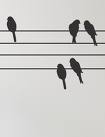As teachers, we all have students who want to cancel their private lesson because they are not prepared…they didn’t practice. When they (or their moms) call to cancel, I tell them this is a slippery slope; one week of not practicing turns into two, and before they know it, they don’t want to come to lessons anymore because their skills have gotten away from them.
I encourage them to come to that lesson anyway; even though they have missed an opportunity for muscle memory growth that week, it doesn’t mean you have nothing to teach them. Don’t yell at them! I don’t mean you shouldn’t admonish them, but don’t scare them into not wanting to come back.
Think of it as an opportunity to use their instrument to explore a new facet of music theory, to learn more about the composer of their piece, and yes, to find out just how important that lost week of muscle memory was….I have a lever harp in my studio that I use sometimes in those cases; I strongly believe that transference of skills (i.e.,relation of notes on the piano to notes on the harp) facilitates a deeper understanding of music theory and appreciation.



 So….once your vowels are unified, it’s definitely time to move on to consonants…..
So….once your vowels are unified, it’s definitely time to move on to consonants….. Ha! Take that, Twitter!
Ha! Take that, Twitter!
Comments